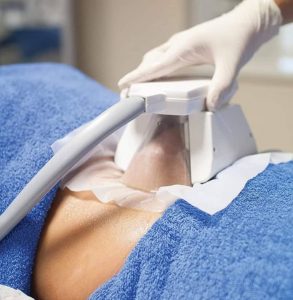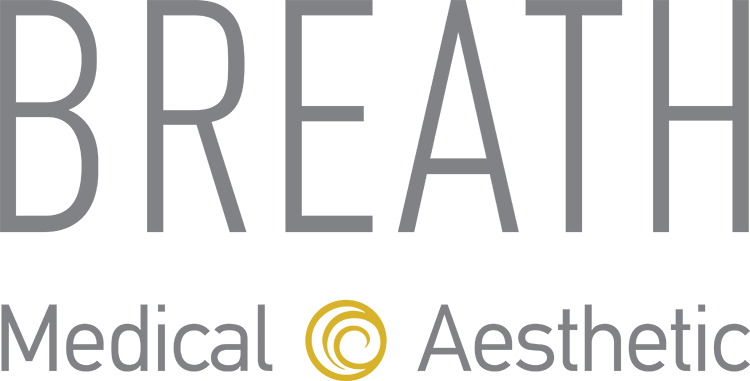Cryo is a popular non-surgical fat reduction choice for patients who wish to reduce a localised fat bulge that has persisted despite diet and exercise. Also referred to as “CoolSculpting” Cryo is an excellent treatment for men and women to target pockets of fat and to sculpt and shape different areas of the body.
The method is based on the idea that cold can target fat cells without damaging the skin or the surrounding tissue. During the Cryo session, we freeze fat in targeted areas by reducing the temperature below 5°C. As a result, 20-40% of the fat cells in the treated area will die in a natural way and dissolve over a course of weeks.
Cryo fat-freezing uses low temperature to break down fat cells, which are particularly susceptible to the effects of cold, unlike other types of cells. While the fat cells freeze, the skin and other structures are spared from injury. This procedure is done without anesthesia. It is a one-off treatment to melt away pockets of fat with visible results after 2-4 months and may continue until 6 months after the treatment. Some patients may opt to have more than one area treated or to re-treat an area more than once.
What areas can be treated?
- Chest
- Flank (Love Handles)
- Abdomen
- Inner Thighs
- Arms
- Upper Back
- Lower Back
- Gluteal Fold (for BumLift)

How does it work?
The procedure is is based on the fact that subcutaneous fat cells are more vulnerable to the effects of cold than the surrounding tissue. When fat cells are exposed to a precise cooling below body temperature, they undergo crystallisation and localised cell death (apoptosis), followed by a local inflammatory response. This process of elimination will take a period of a few months which will gradually reduce the thickness of the fat layer. The fat cells in the treated area are in turn gently eliminated through the body’s normal metabolism process.
What happens during the treatment?
Firstly, you will have a consultation with our medical team where the suitability of the treatment will be determined. After an assessment of the dimensions and shape of the fatty bulge to be treated, an applicator of the appropriate size and curvature is chosen. The area of concern is marked to identify the site for applicator placement. A gel pad is placed to protect the skin. The applicator is applied and the bulge is vacuumed into the hollow of the applicator. The temperature inside the applicator drops, and as it does so, the area numbs. Patients sometimes experience discomfort from the vacuum’s pull on their tissue, but this resolves within minutes, once the area is numb. You can relax during the procedure.
After the vacuum turns off, the device massages the area (which is an innovation of our Perfecte’me System device compared to other brands), which boosts final results. We recommend a course of Cavitation and Shockwave Therapy to further boost the results of your Cryo session. Your therapist will advise you based on individual needs.
What happens after the treatment?
- Immediately after the treatment, the area can be red and swollen
- You may experience discomfort for 2-3 days post treatment
- You may experience a localised numbness for up to 2 months
- The treated area can feel cold and firm for up to 2 weeks
- Bruising can occur and it may last for up to 10 days
- Blistering may occur in very rare occasions
- The injured fat cells are gradually eliminated by the body over 4 to 6 months
- During that time the fatty bulge decreases in size, with an average fat reduction of about 20-40 percent
After care instructions
- Avoid any heat on the treated area before your treatment and until the skin has normalised after the treatment (including sun beds)
- Avoid heavy exercise until the treated area has returned to it’s normal condition
- Wear loose clothes until the redness and numbness subside
- Drink at least 2 liters of water every day
Contra-indications
Pregnancy, Recent pregnancy or breast feeding • Heart conditions including pacemaker • Thrombosis or thrombophlebitis • Anticoagulant medication • Skin Thinning Medication • History of Cancer • Metal prosthesis or implants • Diabetes • Epilepsy • Auto immune conditions • Transplant surgery • Kidneys or liver impairment • Only 1 kidney • Excess alcohol • Water retention • Raynaud’s


